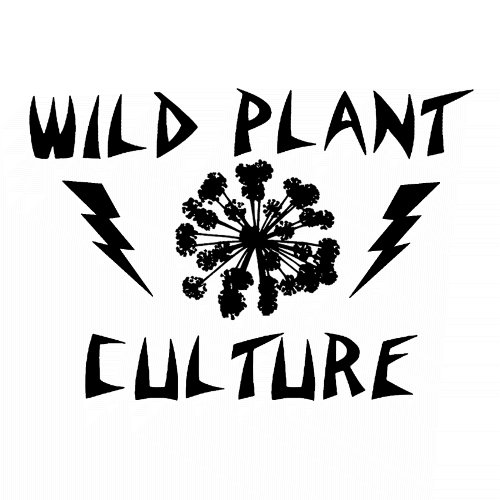Zero Tolerance For Plants

Zero tolerance for plants.
This phrase has come to mind, unbidden, so many times since I first heard it spoken by our state botanist David Snyder. I was in some meeting or other with NJDEP etc., and we started talking about the many rare plants utilizing powerlines. Then we started talking about the way utility lines were increasingly being managed with broadleaf herbicides that would leave nothing but grasses, if that, in place of the long linear swaths of wildflowers and shrubs that occupy the best powerlines. "Zero tolerance for plants", quipped David in response to the discussion.
Zero tolerance for plants. It came to mind after the roadside mowers scalped Creek Road, ripping through thousands of wild ginger, Solomon's seal, meadow rue, virginia waterleaf, and bloodroot stems.
Zero tolerance for plants. It angrily flickers when I see the lineup of $1,000 riding mowers lined up in front of the big box stores, or the racks of insecticidal and herbicidal chemicals just inside. Go ahead, poison your children, you assholes.
Zero tolerance for plants. I say it inside every time I drive by the mile along Route 29 where many of the roadside trees are currently dead and dying (check milemarker 30-31) because of a seemingly botched herbicide job maintain the roadside guardrails. Oops.
Zero tolerance for plants:
• Pesticide use in the United States was 1.1 billion pounds in 2007.
• Herbicides remained the most widely used type of pesticide in the agricultural market sector.
• Among the top 10 pesticides used in terms of pounds applied in the agricultural market were the herbicides glyphosate, atrazine, metolachlor-s, acetochlor, 2,4-D, and pendimethalin, and the fumigants metam sodium, dichloropropene, methyl bromide, and chloropicrin.
• Herbicides were also the most widely used type of pesticide in the home and garden and industrial, commercial, and governmental market sectors, and the herbicides 2,4-D and glyphosate were the most widely used active ingredients.
(Source: http://epa.gov/oppfead1/cb/csb_page/updates/2011/sales-usage06-07.html)
Between corn, wheat, and lawn grasses we manage 200 million acres or more in essential monocultures of grass in the United States, monocultures maintained largely through herbicide and petroleum use. Our old growth forests and prairies, reduced to starch and conformity. Cue the diabetes, heart disease, and mental illness...
Sometimes I wonder if the Japanese Stiltgrass blanketing so many wooded acres is a manifestation of our deeply held yearning to convert our continent to grasses, a phantom servant of our zero tolerance for plants.
* * *
Invasive plants. I've spent as much time upset and confounded by them as anyone else, maddened by the Chinese lespedeza stabbing its way up through the last stand of paleleaf sunflower on the Sourlands pipeline -- butterfly milkweed already gone. The mugwort tracking down Ridge Road, replacing stoneroot and moving towards the spikenard. The acres and acres of Japanese knotweed along the Delaware, where wood nettle, dutchman's breeches, and wild ginger once grew.
But I can't escape the feeling that these invasive plants are the flora of the future. If they can take the herbicides, the pollution, the boneheads with John Deeres and weed wackers, the roadside mowers, the 1.1 billion pounds of pesticides annually, the god bless 'em, let's roll folks, yee-haw.
Invasive plants are not malignant beings here to destroy our native flora (though they do). Invasive plants are symptomatic of our own land use, responding to human disturbances. I think people find them confounding because the disturbance they respond to can be temporally and spatially proximate to the site of invasion. They might be responding to pasturing of a forest 100 years ago, to overpopulated deer emanating from the local suburbs, to a chemical spill miles upriver. People don't see these underlying causes, just the subsequent invasion. And so, we turn our weed wackers and herbicide sprayers on, to eradicate the invasives...
I see many sides to this issue, and none is unequivocally correct. Just as there is a place for more radical medical interventions when tonics, healthy eating, and rest won't suffice, there is a need for weed wackers, chain saws, and herbicide in ecological restoration. But destruction of invasive plants is not an end in itself. Our goal must always be the creation of richer, more abundant plant communities that favor native plant diversity. If we just spray and cut invasive plants for the sake of their removal, as an end unto itself, we merely echo the zeitgeist: zero tolerance for plants.
* * *
Rachel came home depressed from doing butterfly counts in Hopewell the other day. Not much out there, and others with her had concurred. Speculation reigned as to cause of the low numbers. A harsh winter?
People wonder why monarchs, bumblebees and other native pollinators are in decline. Theories abound for the collapse of honeybee populations. Take a walk or a drive through your neighborhood. How many wildflowers do you see in bloom? Check roadsides, farm edges, people's yards. Not many flowers, I'll warrant. Without abundant and dense blooming, pollinators are doomed to disappear.
Some people are skeptical of ecological restoration, even within local conservation groups. Why sink money and staff time into the uncertain and expensive potential morass of restoring native habitat? They miss the point. What we learn on nature preserves hones our skill set for the real job: transforming urban, suburban, and agricultural landscapes into rich, diverse, abundant places. This is the fundamental challenge of our time, and parks and home gardens can be at the cutting edge of research.
First we need to stop the cutting, mowing, and spraying madness, learn to love the weeds a bit, and become students of the remaining diverse landscapes we have.
